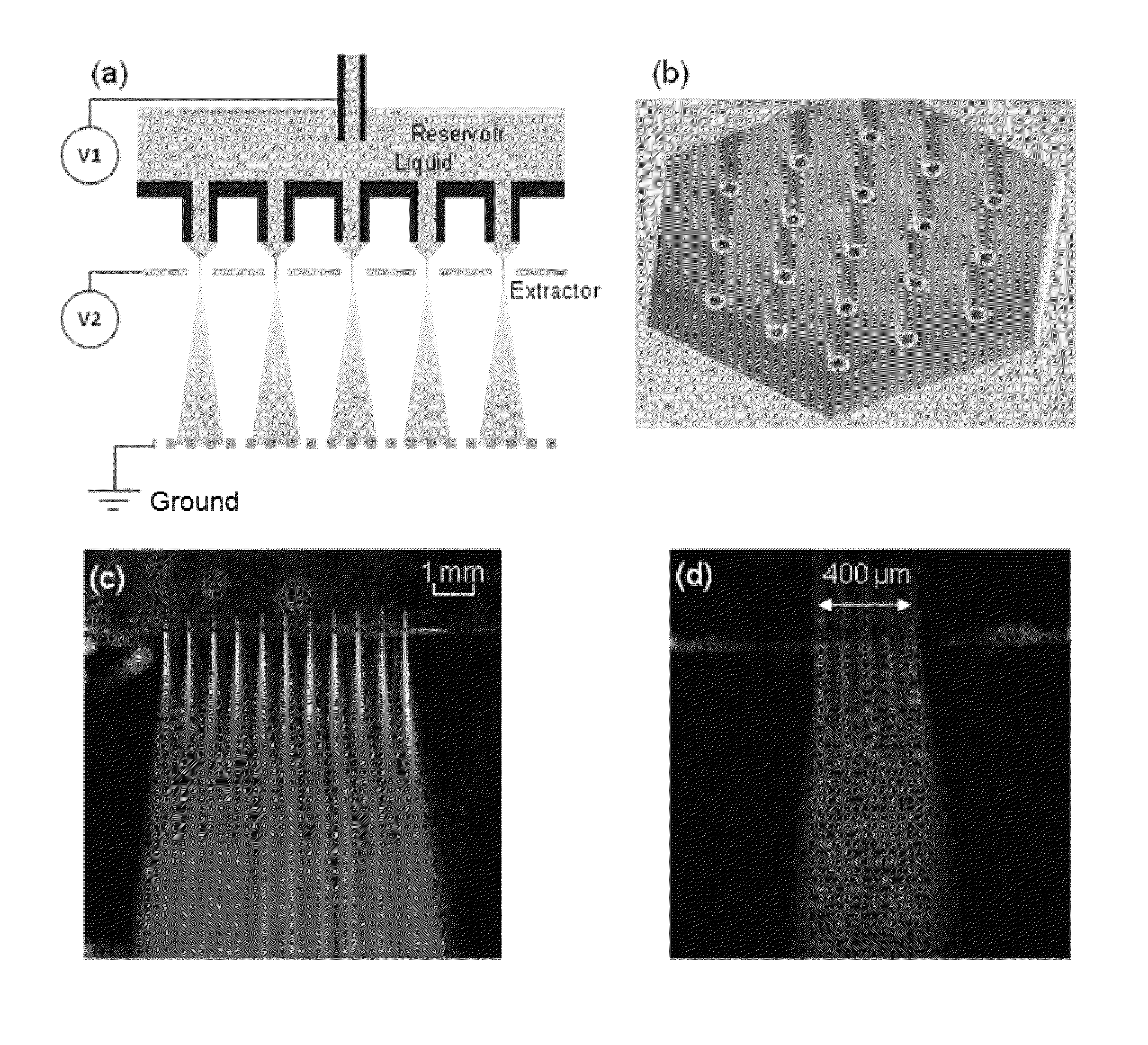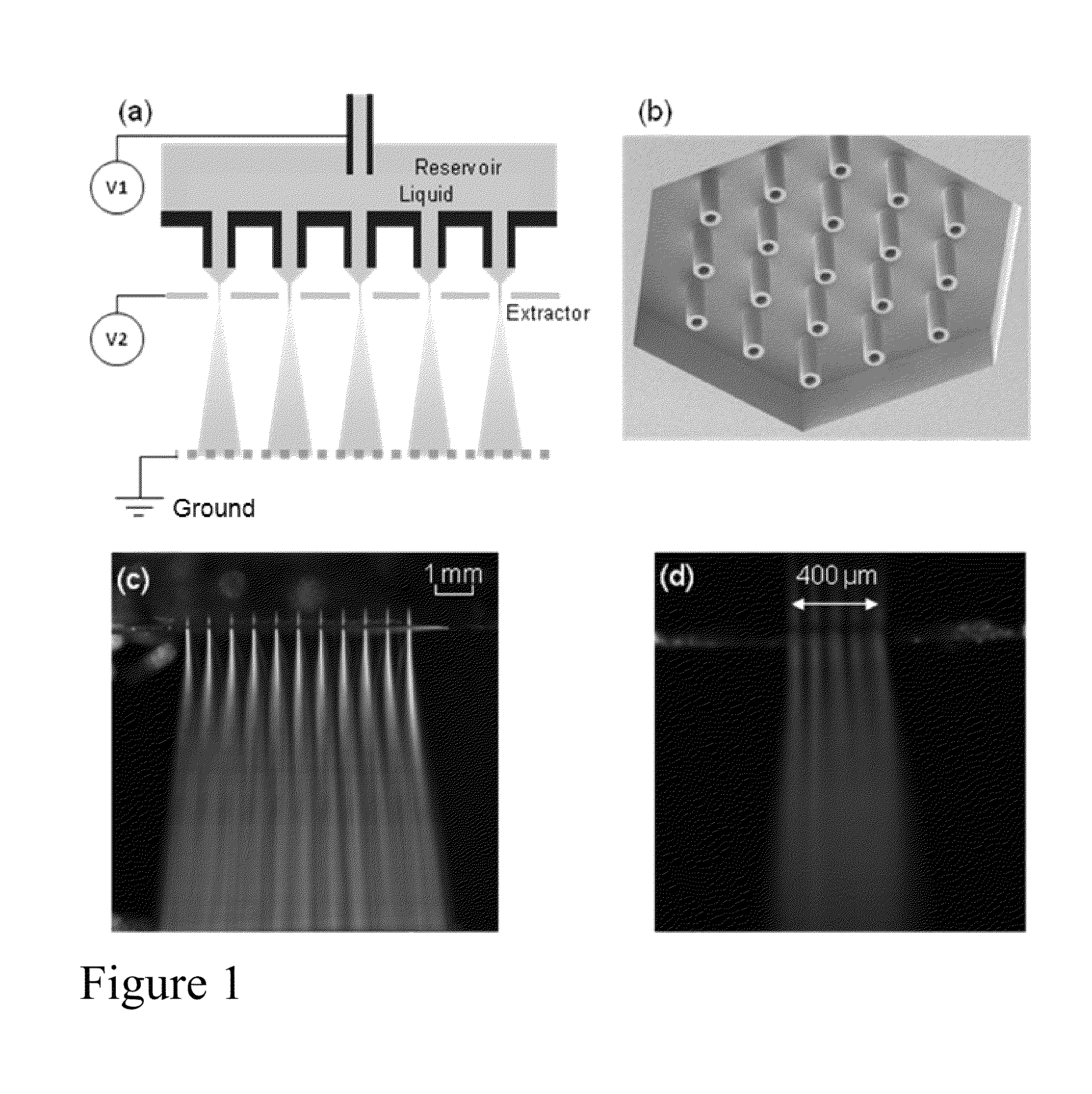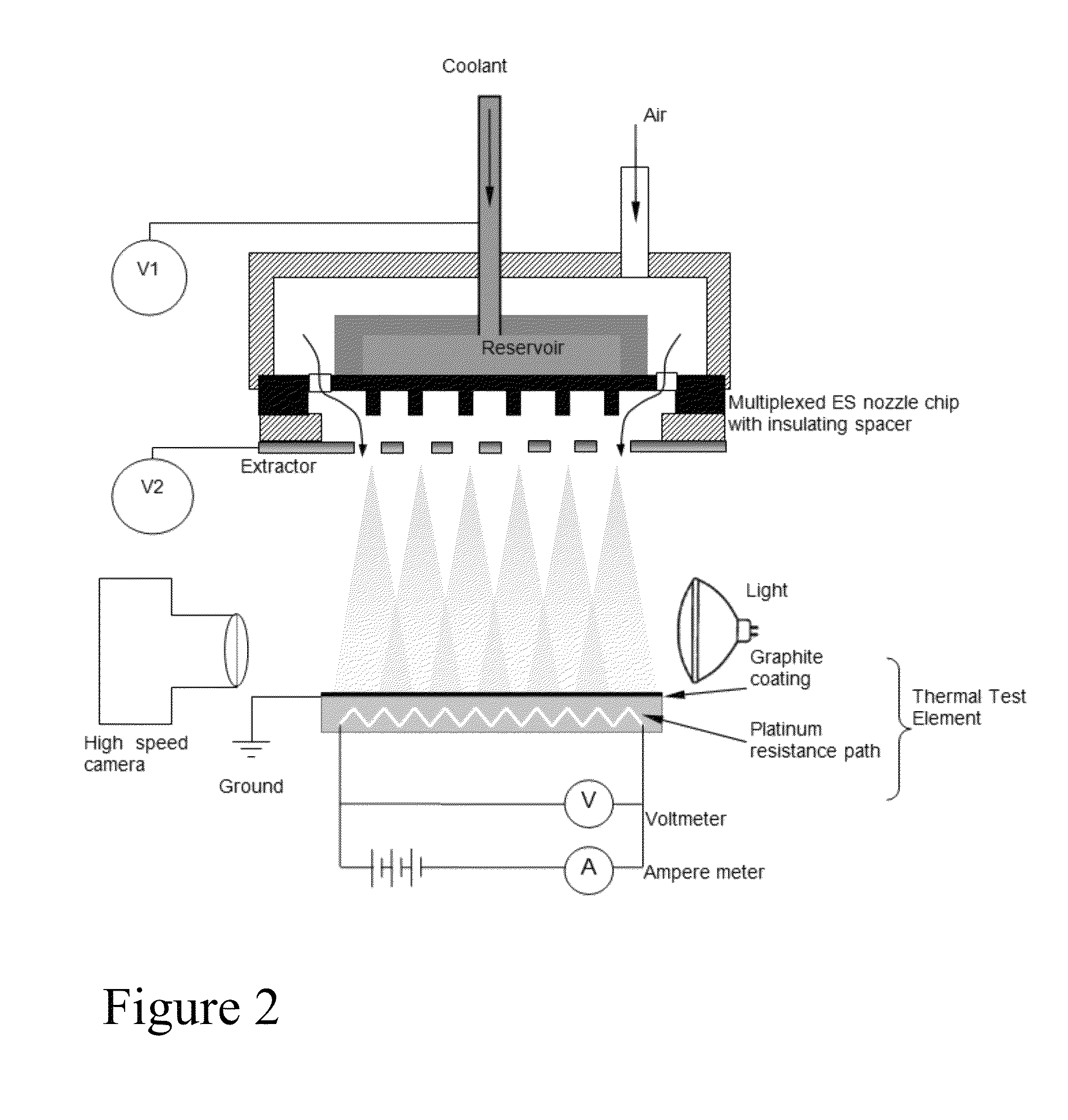Multiplexed electrospray cooling
a technology of electrospray and multiplexing, which is applied in the direction of spraying power supply, spraying apparatus, agriculture, etc., can solve the problems of fractional liquid cooling capacity being exploited, high heat removal, splashing, spreading or rebounding, etc., and achieves remarkable cooling efficiency, high efficiency, and the effect of increasing the level of multiplexing
- Summary
- Abstract
- Description
- Claims
- Application Information
AI Technical Summary
Benefits of technology
Problems solved by technology
Method used
Image
Examples
reference example 1
Droplet Impact on Heated Surface
[0046]The droplet impact dynamics is usually classified in terms of Weber number We=ρdν02 / γ and Ohnesorge number Oh=μ / (ργd)1 / 2, where ρ is the liquid mass density, ν0 is the droplet impacting velocity, d is the droplet diameter before impact, γ is the liquid interfacial tension, and μ is the liquid dynamic viscosity, respectively. We is the ratio between the inertial and the surface tension forces, while Oh relates the viscous force to inertial and surface tension forces. For typical ES droplets impacting a grounded surface, We˜O(10) and Oh˜O(0.1), corresponding to a relatively gentle impact with droplet spreading, but without splashing. The critical parameter that has a significant effect is the surface temperature Ts. When Ts is sufficiently larger than the fluid boiling point, a thin vapour layer forms between the bottom of the droplet and the substrate upon impact. This condition corresponds to the well-known Leidenfrost point. At this point, the ...
reference example 2
Typical Cooling Behavior
[0049]FIG. 4 shows a typical cooling curve, i.e. removed heat flux vs. surface temperature Ts, for an MES cooling system operated at a flow rate of 100 cc / h. The graph contains two regions. The first (Tss>55° C.), suggesting that the heat transfer mechanism is primarily single-phase convection, and the heat flux is too low to heat up the excess liquid to the boiling point (Tb). At the beginning of the second region (Ts>55° C.), the phase change becomes apparent, as evidenced by a steeper slope that is about twice that of the first region. As the superheat (Ts−Troom) increases, the slope of the curve gradually decreases. At 100° C., the curve reaches the upper limit of heat flux removed, i.e. the critical heat flux (CHF), of 96 W / cm2. The general behavior of FIG. 4 is consistent with typical spray cooling except for the fact that the two phase region starts ˜20K below Tb in FIG. 4, while ordinarily the two-phase region starts 3 to 5K above Tb. The difference i...
reference example 3
Effect of Droplet Diameter
[0052]At a constant flow rate, the droplet diameter can be fine tuned by changing the liquid conductivity K with trace amount of ionic liquid additives or other electric conductivity enhancers or by partitioning the flow rate through more electrospray sources, that is by increasing the multiplexing level. Here we implement the first, easier approach. FIG. 5 shows the relationship between droplet size and flow rate for two liquids with different conductivities: pure ethanol with conductivity K measured at 1.3×10−5 S / m and ethanol doped with 1.6 PPM (by weight) of the ionic liquid, with conductivity K=3.3×10−5 S / m. For the same flow rate, the higher conductivity decreases the droplet size by about 20% and the droplet volume by about 60%.
[0053]FIG. 6 shows the cooling curves for two multiplexed electrosprays with different droplet sizes that operated at an identical flow rate of 25 cc / h. The droplet size effect is twofold. First, the CHF is higher for smaller ...
PUM
 Login to View More
Login to View More Abstract
Description
Claims
Application Information
 Login to View More
Login to View More - R&D
- Intellectual Property
- Life Sciences
- Materials
- Tech Scout
- Unparalleled Data Quality
- Higher Quality Content
- 60% Fewer Hallucinations
Browse by: Latest US Patents, China's latest patents, Technical Efficacy Thesaurus, Application Domain, Technology Topic, Popular Technical Reports.
© 2025 PatSnap. All rights reserved.Legal|Privacy policy|Modern Slavery Act Transparency Statement|Sitemap|About US| Contact US: help@patsnap.com



